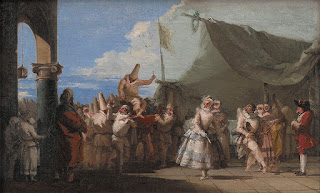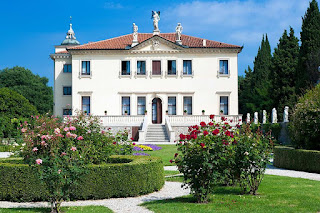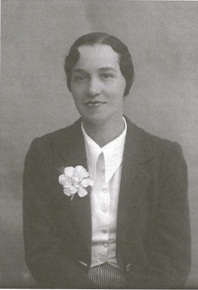Altiero Spinelli - political visionary
Drafted plan for European Union while in Fascist jail
Altiero Spinelli, a politician who is regarded as one of the founding fathers of the European Union, was born on this day in 1907 in Rome. A lifelong Communist who was jailed for his opposition to the Fascist regime of Benito Mussolini, he spent much of the Second World War in confinement on the island of Ventotene in the Tyrrhenian Sea, one of an archipelago known as the Pontine Islands. It was there that he and two prisoners, Ernesto Rossi and Eugenio Colorni, agreed that if the forces of Fascism in Italy and Germany were defeated, the only way to avoid future European wars was for the sovereign nations of the continent to join together in a federation of states. The document they drew up, which became known as the Ventotene Manifesto, was the first document to argue for a European constitution and formed the basis for the Movimento Federalista Europeo, which Spinelli, Rossi and some 20 others launched at a secret meeting in Milan as soon as they were able to leave their internment camp. In a nutshell, the Ventotene Manifesto put forward proposals for creating a European federation of states so closely joined together they would no longer be able to go to war with one another. Read more…
______________________________________
Amilcare Ponchielli - opera composer
Success of La Gioconda put musician on map
The opera composer Amilcare Ponchielli was born on this day in 1834 in Paderno Fasolaro, near Cremona, about 100km south-east of Milan in what is now Lombardia. Ponchielli's works in general enjoyed only modest success, despite the rich musical invention for which he was later applauded. One that did win acclaim in his lifetime, however, was La Gioconda, which was first produced in 1876 and underwent several revisions but remained unaltered after 1880. Well known for the tenor aria, Cielo e mar, and the ballet piece, Dance of the Hours, La Gioconda is the only opera by Ponchielli still performed today and many recordings have been made, featuring some of the biggest stars of recent times. Maria Callas, Renata Tebaldi and Montserrat Caballe are among those to have played the role of Gioconda, written for soprano, while the lead tenor part of Enzo, whose affections are sought both by Gioconda and another major character, Laura, has been taken by Giuseppe Di Stefano, Carlo Bergonzi, Luciano Pavarotti and Placido Domingo among others. Ponchielli had such a talent for music that he won a scholarship to Milan Conservatory at nine years old. Read more…
______________________________________
Gino Lucetti – failed assassin
Anarchist tried to kill Mussolini with grenade
Gino Lucetti, who acquired notoriety for attempting to assassinate Italy’s Fascist dictator Benito Mussolini in Rome in 1926, was born on this day in 1900. A lifelong anarchist, part of a collective of like-minded young men and women from Carrara in Tuscany, he planned to kill Mussolini on the basis that doing so would save the lives of thousands of potential future victims of the Fascist regime. Lucetti hatched his plot while in exile in France, where he had fled after taking a Fascist bullet in the neck following an argument in a bar in Milan, clandestinely returning several times to Carrara to finalise the details. After enlisting the help of other anarchists, notably Steffano Vatteroni, who worked as a tinsmith in Rome, and Leandro Sorio, a waiter originally from Brescia, he returned to Rome to carry out the attack. Vatteroni was able to obtain information about Mussolini’s movements from a clerical worker in the dictator’s Rome offices, including details of his regular motorcades through the city. These were carefully choreographed affairs in which cheering citizens lined the streets, enabling Mussolini to present an image to the world of a popular leader. Read more…
______________________________________
Luca Cordero di Montezemolo – aristocrat and businessman
Former driver who led Ferrari to Formula One success
Luca Cordero di Montezemolo, a former racing driver, chairman of Ferrari and Fiat and president of employers’ federation Confindustria, was born on this day in 1947 in Bologna. He is one of the founders of NTV, an Italian company that is Europe’s first private, open access operator of 300km/h (186 mph) high-speed trains. Montezemolo is a descendant of an aristocratic family from Piedmont, who served the Royal House of Savoy for generations. He is the youngest son of Massimo Cordero dei Marchesi di Montezemolo and Clotilde Neri, niece of the surgeon, Vincenzo Neri. His uncle was a commander in the Italian Navy in World War II and his grandfather and great grandfather were both Generals in the Italian Army. After graduating with a degree in Law from Rome Sapienza University in 1971, Montezemolo studied for a master’s degree in international commercial law at Columbia University. His sporting career began at the wheel of a Giannini Fiat 500. He then drove briefly for the Lancia rally team, before joining the auto manufacturing conglomerate Fiat. In 1973 he moved to Ferrari, where he became Enzo Ferrari’s assistant. Read more…
____________________________________
Isabella de’ Medici – noblewoman
Tuscan beauty killed by her husband
Isabella Romola de’ Medici, the daughter of the first Grand Duke of Tuscany, was born on this day in 1542 in Florence. She was said to have been beautiful, charming, educated and talented and was the favourite child of her father, Cosimo I de’ Medici. But she died at the age of 33, believed to have been murdered by the husband her family had chosen for her to marry. While Isabella was growing up she lived first in Palazzo Vecchio and later in Palazzo Pitti in Florence with her brothers and sisters. Her brother, Francesco, who was a year older than her, eventually succeeded his father as Grand Duke of Tuscany. The Medici children were educated by tutors in classics, languages and the arts and Isabella particularly loved music. When Isabella was 11 she was betrothed to 12-year-old Paolo Giordano Orsini, heir to the Duchy of Bracciano in Tuscany, because her father wanted to secure the southern border of Tuscany and his relationship with the Orsini family. Five years later, when Isabella was 16, they were married at the Medici country estate, Villa di Castello. Read more…


.jpg)
.jpg)

_-_VIA_CRUCIS_II_-_Jesus_carries_his_cross_by_Giandomenico_Tiepolo%20(1).jpg)
.jpg)

.jpg)

_-_VIA_CRUCIS_II_-_Jesus_carries_his_cross_by_Giandomenico_Tiepolo.jpg)



.jpg)
.jpg)
.jpg)
.jpg)
%20(1).jpg)

.jpg)
_nave_left_-_Altar_of_Madona_di_Ca'Pesaro%20(2).jpg)

.jpg)


.jpg)

_-_Facade.jpg)


.jpg)
.jpg)
.jpg)




.jpg)

